Posted by Frank Griffo on Nov 9th 2025
The Path of Cold and Flu
Invasion: Wind Finds an Opening
Wind describes the tendency of pathogens to strike quickly, to move, and to keep changing. When wind combines with other environmental factors, distinct invasion patterns emerge.
Wind-Cold
Chills, stiff neck, clear thin mucus, no sweating.
The surface is tight; the pathogen has not yet transformed into heat.
Treatment principle: release the exterior, warm, and promote sweating.
Herbal support: formulas based on Jing Fang Bai Du San or Gui Zhi Tang principles.
Griffo Recommendation: Solis Tincture and Tea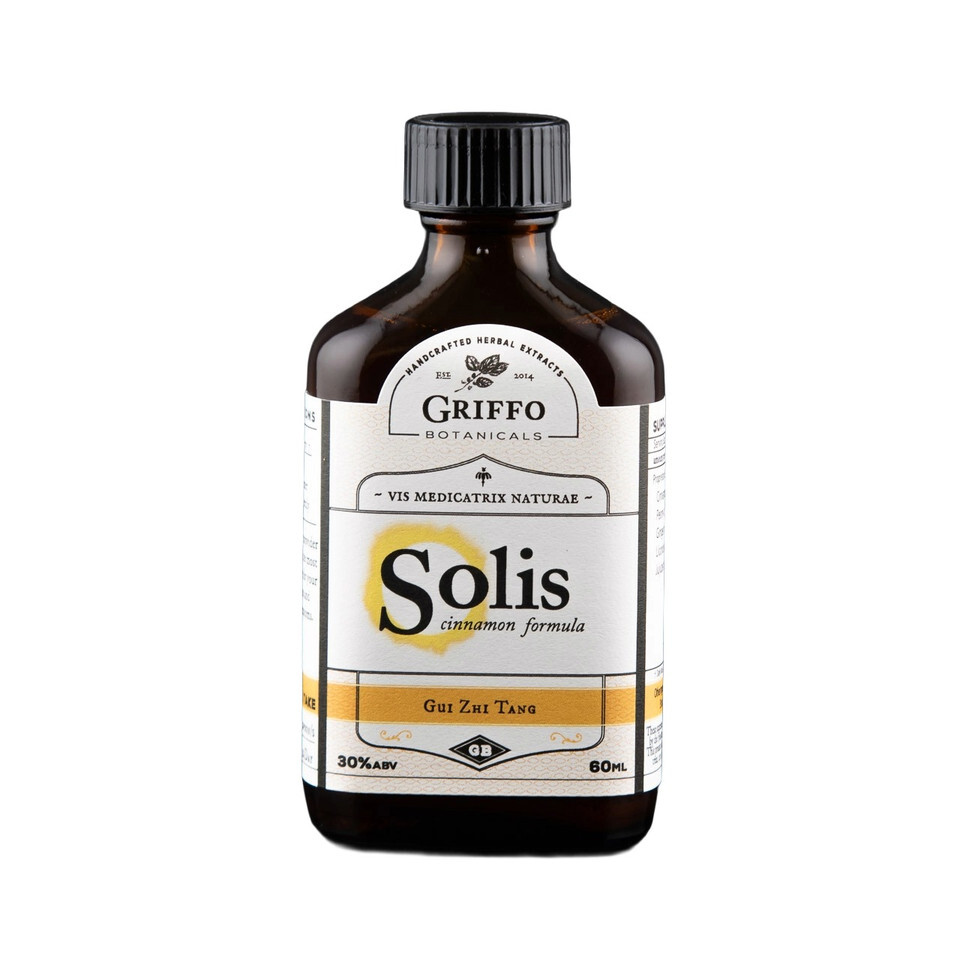
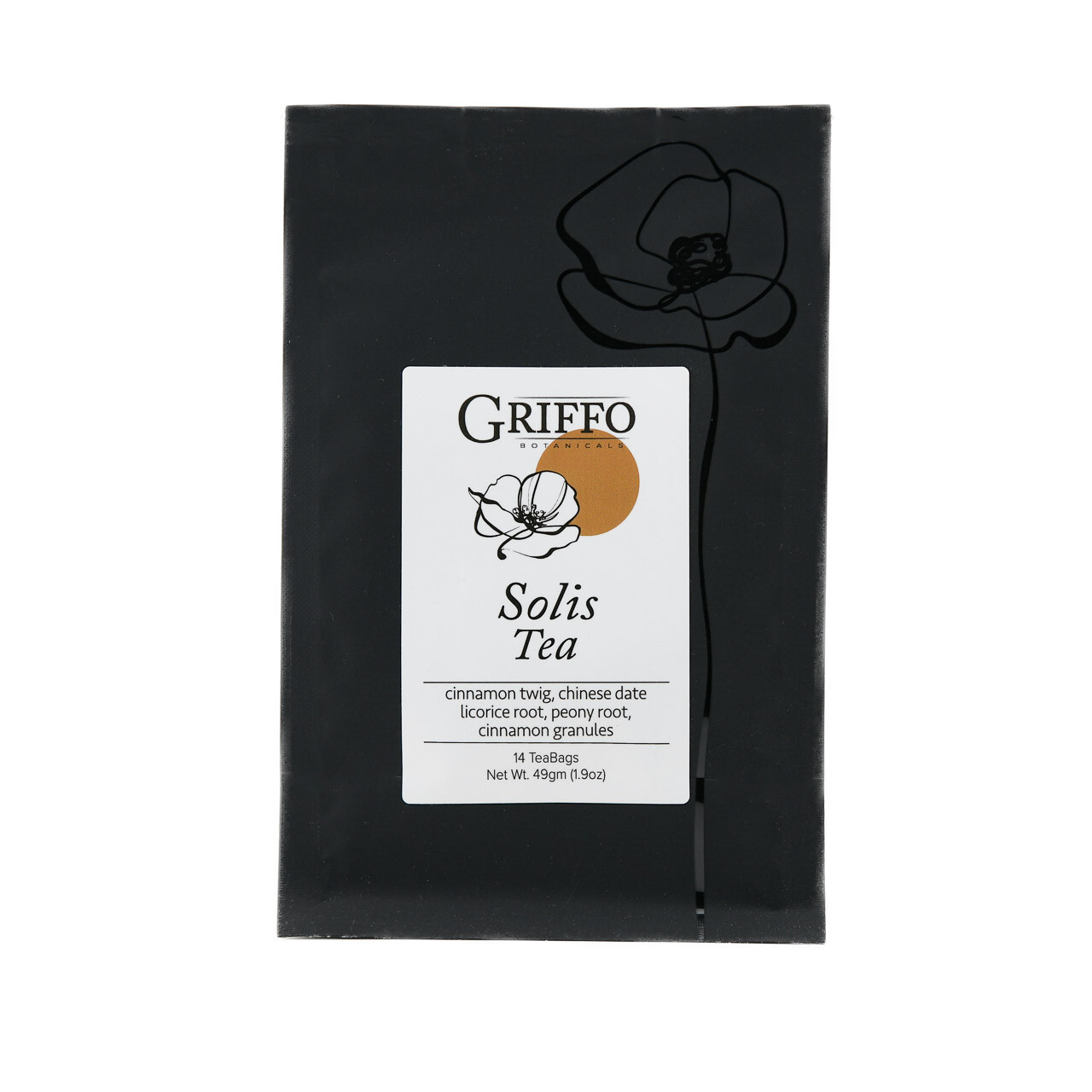
Wind-Heat
Sore throat, fever, yellow mucus, thirst.
The pathogen transforms rapidly; heat takes over.
Treatment principle: release exterior heat, protect fluids.
Herbal support: Yin Qiao San, Sang Ju Yin, or Jin Yin Hua dominant formulas.
Griffo Recommendation: Gan Mao Tincture is a modern (by TCM standards) formula designed to relieve wind heat with the addition of herbs with anti-viral properties. At Griffo, we added a few herbs from Yin Qiao San to enhance itswind-heat clearing properties.
is a modern (by TCM standards) formula designed to relieve wind heat with the addition of herbs with anti-viral properties. At Griffo, we added a few herbs from Yin Qiao San to enhance itswind-heat clearing properties.
Wind-Damp
Fatigue, heaviness, sinus pressure, loose stool, lingering low-grade fever.
Damp obstructs qi flow, slowing recovery.
Treatment principle: transform damp, support Spleen, release exterior.
Herbal support: aromatic and drying herbs—Huo Xiang, Pei Lan, Cang Zhu.
Griffo Recommendation: Gastrorest Tincture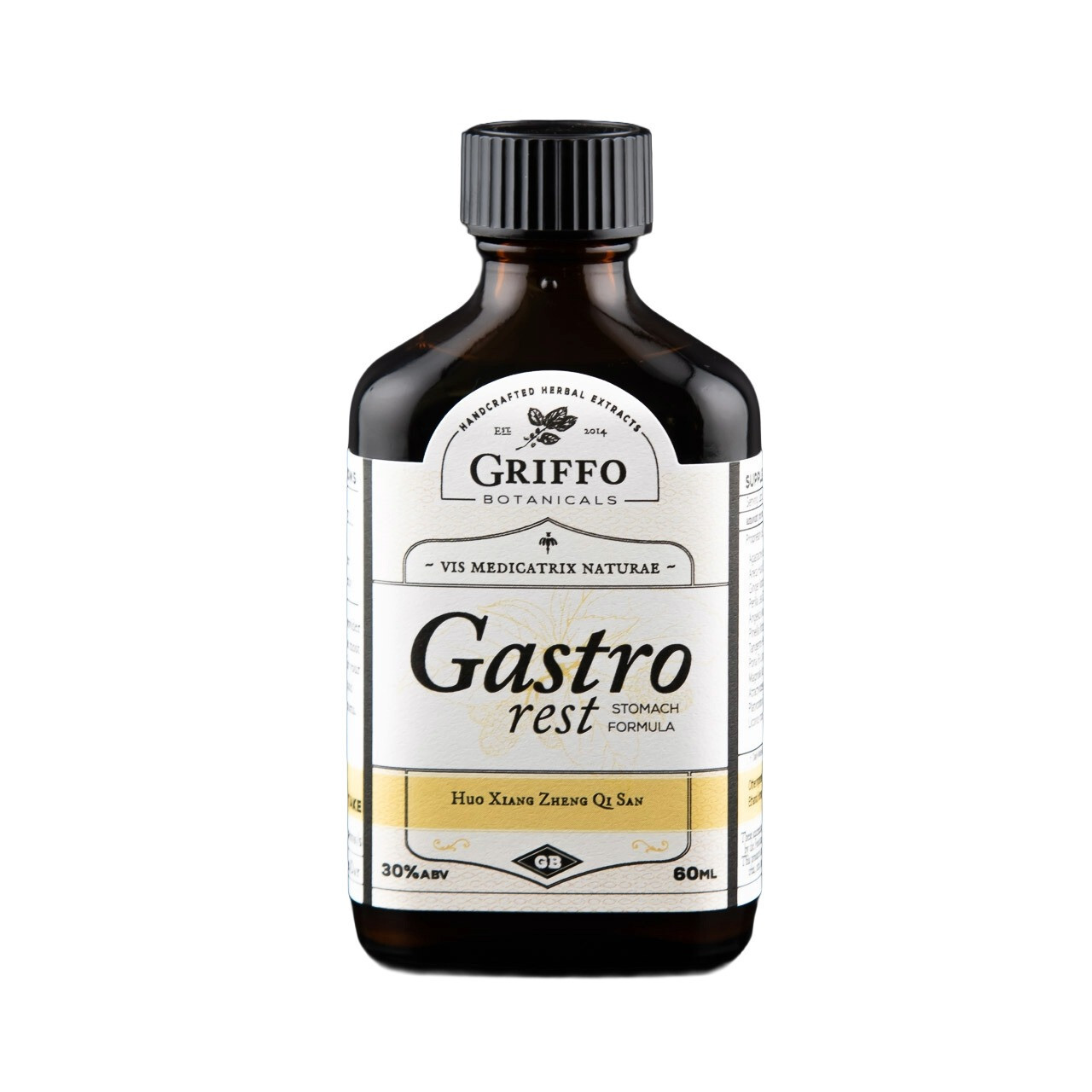
The invasion stage in these forms is dynamic: cold can turn to heat, damp can complicate either, and improper treatment can drive the pathogen inward. Early intervention is the art—and the most effective time to treat.
“…treat early, treat strong and it will be like it never happened.”
SHOP COLD & FLU |
Phlegm: Why Mucus Forms
Phlegm is not the enemy—it’s the battlefield. In TCM, mucus represents fluids transformed by heat, cold, or damp stagnation.
- Thin, clear phlegm arises when cold inhibits transformation; the Spleen fails to move fluids, which overflow to the Lung.
- Thick, yellow phlegm indicates heat cooking and congealing the fluids.
- Sticky or copious mucus signals dampness obstructing qi flow, often from diet, weak digestion, or overuse of suppressive medications.
Griffo Recommendation: Pneuma Tincture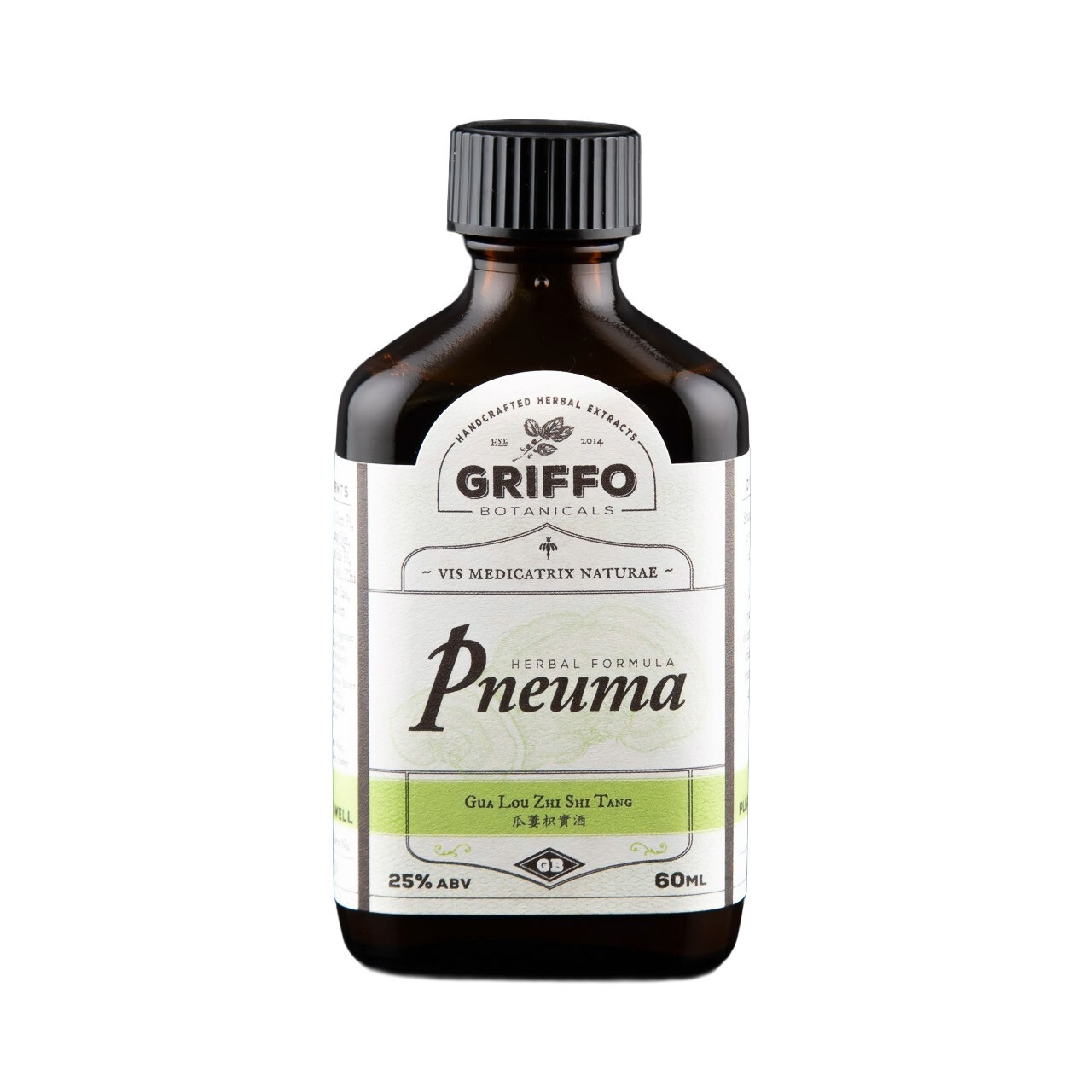 and Tussis Tincture
and Tussis Tincture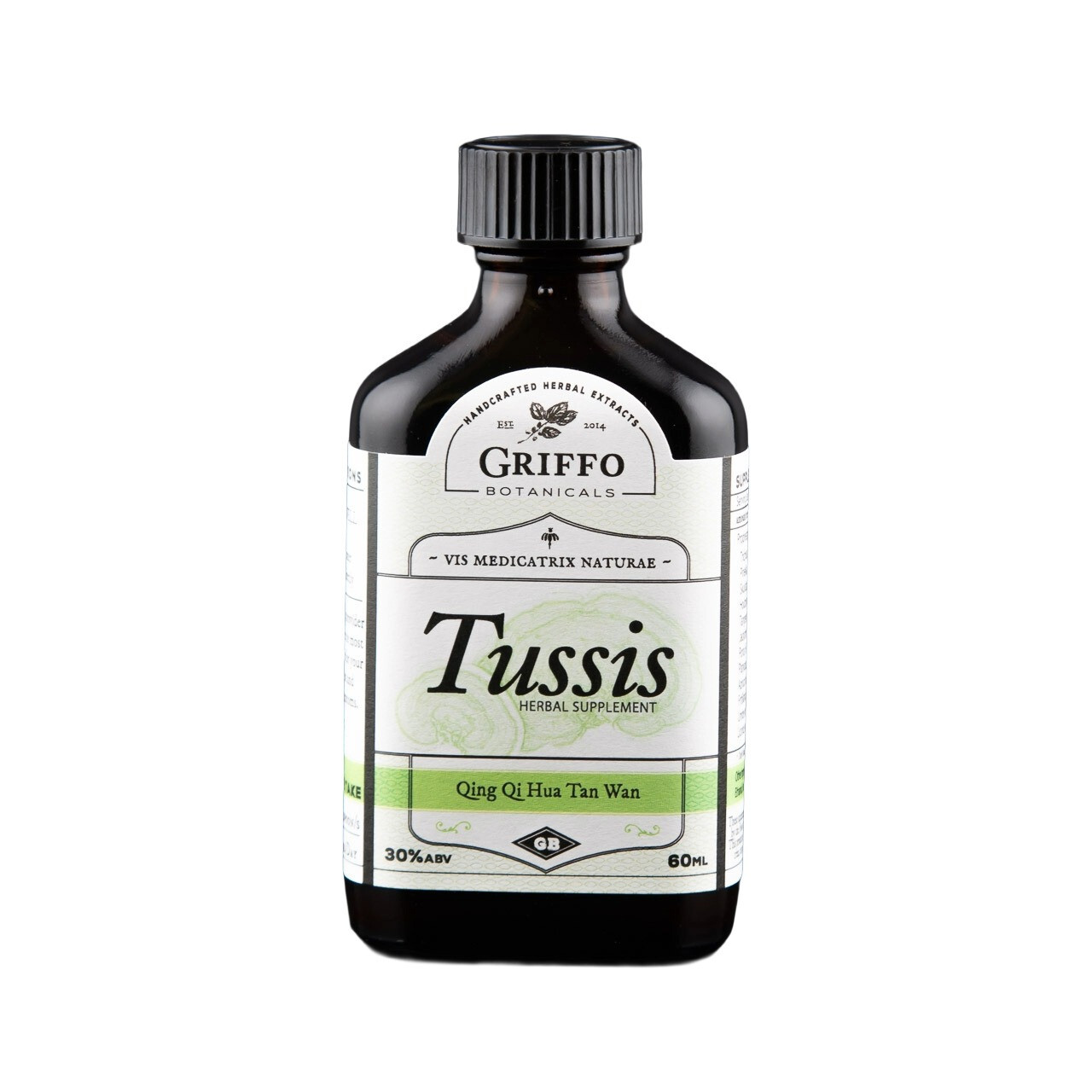
Medical perspective: Early in a cold, thin, clear mucus (water, salts, proteins) flushes irritants and viruses. As the immune response intensifies, white blood cells and debris thicken mucus; heat and dehydration make it sticky. Dead neutrophils and oxidized iron can tint it yellow or green. Thin/clear suggests early or mild inflammation; thick/colored suggests a more advanced immune response.
Treatment shifts: warm/transform fluids for cold phlegm; clear heat/resolve for hot phlegm; drain damp/fortify Spleen when mucus lingers beyond the acute phase. Blending fluid-resolving with Lung-yin-nourishing herbs often works best.
Recovery: Restoring What Was Spent
After fever breaks, mucus typically lags, but the pathogen has left. The Spleen and Lung are typically depleted and there is residual dryness, phlegm, fatigue, or lingering cough (Xiao Chai Hu Tincture).
 At this point mild tonification is most appropriate with fluid balancing herbs.
At this point mild tonification is most appropriate with fluid balancing herbs.
- Support qi and fluids: Astragalus (Huang Qi), Codonopsis (Dang Shen), Licorice (Gan Cao).
- Nourish yin if heat damaged fluids: Glehnia (Bei Sha Shen), Ophiopogon (Mai Men Dong).
Rest, warm meals, and gradual return to activity prevent relapse—shift from fighting to rebuilding.
Prevention: Next Time
The best medicine for cold and flu is prepared long before the season starts.
- Strengthen Lung and Spleen: Astragalus (Huang Qi), Atractylodes (Bai Zhu), Fang Feng—core of Yu Ping Feng San. (Griffo’s Basecamp Tincture and Tea extends this with mushrooms and adaptogens.)
- Reduce stress and protect sleep to preserve wei qi.
- Support digestion to prevent dampness that breeds future phlegm.
- After significant infection, light tonics for ~2 weeks reduce recurrence.

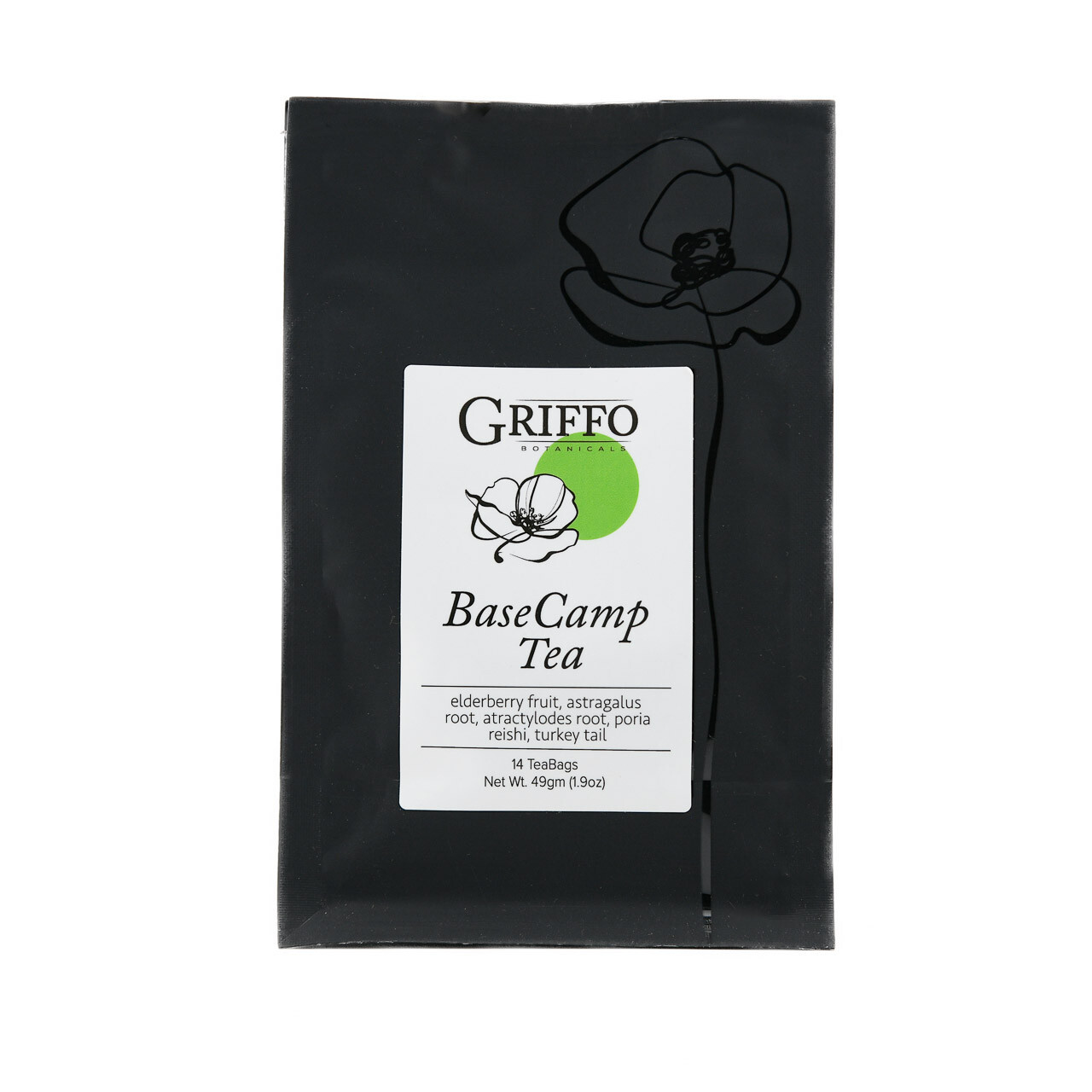
Conclusion
Reframing illness from a binary "sick vs well" mindset and viewing it as a continuum and a process helps patients understand their health and our treatment. As practitioners, this mindset helps us gain a framework to move through treatment principles from release → transform → tonify without contradiction.
- frank

